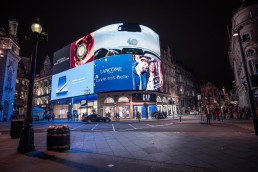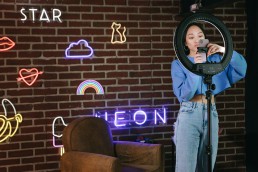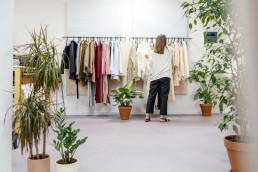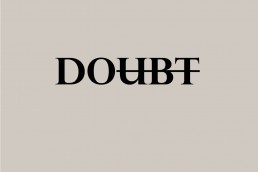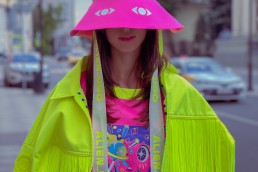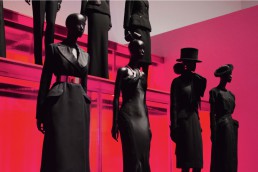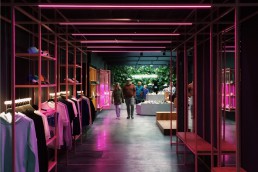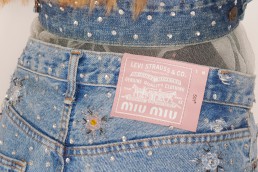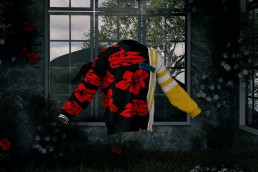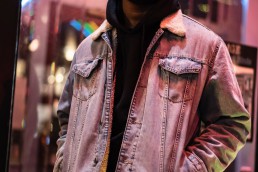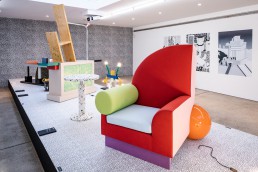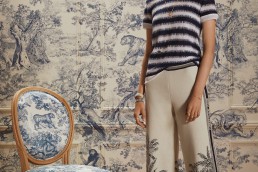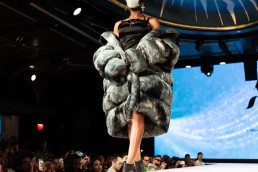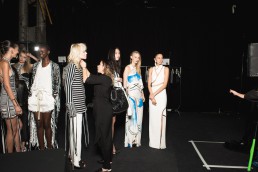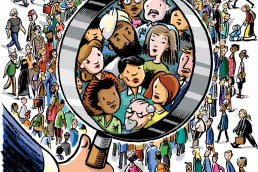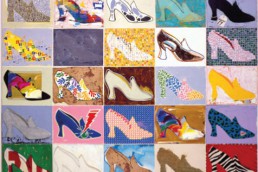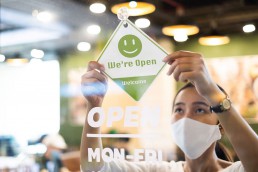Picking the Right Approach to Digital Collaboration
Image courtesy of Dan Page/theispot.com
Many software tools promise to facilitate teamwork — but what suits close-knit colleagues may not help those who need to make connections across the organization.
Consider this paradox about digital change: Although it increases the need for collabo-ration in organizations, it also makes collaborating more difficult. In my research and consulting work, I’ve observed that this happens for three key reasons.
First, it becomes harder to identify the right internal partners. In many organizations in the thick of transformation, particularly agile work environments, employees are given greater latitude to make important decisions on the ground. But when they need help completing tasks or solving problems to execute those decisions, they often aren’t sure where to turn for support, because they lack a broad understanding of who has what expertise in the organization. Thanks to technology, people can connect with coworkers across an array of specialties. However, research shows that they tend to focus on the information, ideas, and skills held by the colleagues around them — those in their work groups, for instance, or those who sit in close physical proximity. That may be evidence of an attempt to rein in an overwhelming field of potential collaborators because employees have no clear sense of which colleagues know what.
When people narrow their attention in that way, it undermines the benefits of digital connectivity, but it’s understandable. Given how frequently and fluidly people move from project team to project team (possibly from week to week), they don’t often build the relationships that would allow them to map out the expertise in their companies. And failing to find the right experts can easily lead to work duplication and missed opportunities for efficiency and innovation.
Second, it’s harder to get coworkers to say yes to requests to collaborate—even experts who would be ideal collaborators if they had the time, energy, and resources to commit to yet another emergent team. In a dispersed, agile workplace, persuasion and influence are essential to securing needed resources. But it’s tough to persuade people to join your project if you have never worked together closely and have not developed trust.
Third, given that lack of close connection and established trust, it’s also harder to develop the kind of common ground that facilitates productive interaction. The issues that people care about, the technical languages they speak, their modes of problem-solving, and their goals tend to diverge greatly when they work in different locations, specialize in different domains, and are responsible for different outcomes. It’s particularly challenging to bridge the gaps in understanding if they don’t know many people in common. The less employees know about each other’s motives and knowledge bases, research shows, the less inclined they are to share knowledge with each other. This can lead to more mistakes, slower project completion, and, in many cases, less innovative outcomes.
Do you want to read more? Please fill your email below and we will send it to you!
Paul Leonardi(MIT Sloan Management Review)
As Stores Reopen, Which Customers Are Most Likely to Return?
New research reveals how consumer preferences have changed and how retailers can adapt.
As Stores Reopen, Which Customers Are Most Likely to Return?
The COVID-19 pandemic and associated lockdowns throughout the U.S. have dramatically affected shopping behavior and shifted priorities for retail customers. While the pandemic has resulted in revenue declines for the majority of businesses, some brand owners and retailers have seen significant growth by adapting their offerings and communication to capitalize on new customer needs and behaviors.
We investigated the scale and variation of the lockdown’s impact on shopping behaviors across a number of product categories, fielding three surveys (in late March, late April, and late May 2020) among a representative sample of more than 5,000 U.S. households. The key findings of our March survey formed the basis of our article “Growth Opportunities for Brands During the COVID-19 Crisis.”
As it became clear that the reopening of the economy would be phased, we extended the focus of our April and May research to identify a new spectrum of customer segments and the factors influencing their likelihood to return to inperson shopping. This article draws on these findings to identify how retail stores and brand owners that rely significantly on physical retail can reengage with former customers or tailor their offerings and communication to appeal to these new customer segments.
What We Found
Our research (see “The Research”) shows that, as the lockdown eased, retail shoppers could be grouped into five segments, each of relatively equal size, based on their motivations for in-person shopping—for example, whether shopping is an activity that they enjoy in its own right, as part of a sociable lifestyle, or simply as a means to an end.
In order to understand the factors that might motivate each customer segment to return to in-person shopping, we also asked respondents about their quarantine experience and associated emotions and attitudes. This revealed wide variability in these situational factors that greatly exceeded the differences observed on traditional demographic factors.
Studying the situational, attitudinal, and behavioral factors at play (more than 60 in total) has allowed us to develop detailed and actionable customer segment profiles, together with recommendations for how retailers and brand owners can appeal to each segment in a relevant and emotionally compelling way.
Do you want to read more? Please fill your email below and we will send it to you!
Jonathan Knowles, Patrick Lynch, Russell Baris & Richard Ettenson(MIT Sloan Management Review)
When Collaboration Fails and How to Fix It
Leaders can diagnose team dysfunction by looking for six common patterns.
Beth was excited when her CEO asked if she would take over a high-profile commercialization project — one expected to double the audiovisual technology company’s revenues in the coming decade and diversify its offerings. She would be replacing a valued leader who was leaving the organization. The project had been struggling, but it was still early days, and the potential upside was amazing. Beth accepted the assignment on the spot.
In her first week, Beth dug in. She found the project fully funded and staffed by 64 carefully selected people from departments across the company, including engineering, marketing, finance, and quality assurance. Three concurrent work streams — focusing on research, product development, and marketing and sales — had been established and a well-respected leader appointed for each.
Yet, 10 months later, the project was badly behind schedule and bogged down. Everyone with whom Beth spoke was frustrated with the slow pace of progress. They were all pointing fingers, but in different directions. The CEO believed the problem was a failure of leadership in the three work streams. The departing project leader blamed team members for not devoting enough time to the project. One team member said the problem was poor meeting management; another said key decisions weren’t being made in a timely manner.
What should Beth do? Appoint new work stream leaders? Relaunch the project? Restructure the group or the work? Add more people to the project team? Schedule more meetings or provide an online work platform?
It’s too soon to say. At this juncture, all Beth really knows is that the project is a collaborative effort critical to the success of the organization and that the effort is failing.
Collaborative failures can stem from a variety of conditions. Sometimes they are woven into the fabric of groups when they are formed, perhaps because team members’ incentives are misaligned or decision rights haven’t been defined. Sometimes they develop as groups evolve and their members interact, as when a group expands beyond the limits of its structure or gets bombarded with too many priorities.
Such problems are pernicious and prevalent. Work, after all, is increasingly collaborative. Research conducted by the Institute for Corporate Productivity found that 40% of high-performance organizations (that is, those that excel in revenue growth, profitability, and market share compared with their competition over a five-year time horizon) are shifting to a “high or very high degree” from traditional functions to more cross-functional project- and team-based work. In addition, trends that support and drive more collaboration are gaining momentum, including the rising use of Agile methodologies, the de-layering of hierarchies, the adoption of digital tools and technologies, and the dramatic transition to remote work in response to COVID-19.
Do you want to read more? Please fill your email below and we will send it to you!
Rob Cross and Inga Carboni(MIT Sloan Management Review)
Digital Fashion Week. What Are the Communication Tools Engaging in Today's Luxury Landscape?
COVID-19 brought a new agenda in order to reinvent the fashion communication practices. Fashion Weeks all over the world had to adapt and get into a new shift of paradigm, where digital is the new black.
Analysing and trying new communication strategies never been so exciting for everybody inside the fashion business. Out of the comfort zone, fashion brands and organisations decided to step up and review their past efforts in order to understand what kind of actions -in this uncertain worldwide context- will work for them in the long run and how to bring innovation for the now.
According to BOF-Mckinsey’s report The State of Fashion 2021 the word ‘digital’ is seen as a silver lining and an opportunity for a third of the survey respondent executives. Not only a buzzword but, a key element for navigating the routes from a wider digital perspective, from operations, production, retail management, communications, PR and customer relationship.
The fashion show has drastically changed in the last few decades. It has evolved from an exclusive in-house presentation of haute couture held for a select clientele, to a biannual (sometimes more if we include Pre-Fall and Cruise), spectacle of both, couture and ready-to-wear platforms, including womenswear and menswear clothing, seen and exposed worldwide as never before.
Runways, presentations, ‘drops’, collaborations, all streamed, photographed and shared in social media, blogs, websites in minutes. Digital is settling the agenda for the quick response of all PR teams and their skills to communicate faster, accurately and in a flexible way to meet their audiences.
Digital Fashion Week, is ‘Phygital’ the Future?
Press, guests, buyers, A-list celebrities and fashion enthusiasts had to stayed home during quarantine last year, unable to attend physically to the shows in fashion capitals. In fashion’s clock, that meant almost a gap of three seasons and a whole different approach decided by each brand in order to maintain relevance.
Fashion organisations around the world from New York, London to Milan and back to Paris had to rearrange their calendars and combine their expertise on delivering a great fashion moment with technology and creative ways to connect virtually with the audience.
The term ‘phygital’ can be defined as the connection of both worlds- the physical and the digital. The principal aim of this concept is to build in the area of marketing and communications ecosystem between brands and clients, respectively a dynamic between the final user and the showcased product. ‘Phygital’ merges the latest knowledge and innovations in communication technologies which are implemented in the physical environment, injecting dynamism in a faster and richer experience, pushing and experimenting visually, sensorially and generating a much deeper impression in the audience.
Think of Louis Vuitton’s digital showcase by French designer Nicolas Ghesquière, a runway hosted on the top floor of Paris’ Le Samaritaine. With physical guests, a video streaming with robotic arms and the magic of a green screen with digital images in the backdrop for online attendees but dialoguing with the mythical department store structure in real life.
Communication and Digital Tools: Top Luxury’s Favorites this Season.
-Fashion Film.
A well-known strategy for luxury heritage brands. Fashion Film has evolved into a vaster communication field combining cinematography aesthetics, brand storytelling, featuring celebrities and the virality for younger consumers. Saint Laurent’s latest hit, Summer of 21 a film featuring Charlotte Rampling directed by Gaspar Noe a complementary second part of its homerun ‘I wish you were here’ the women’s summer collection by Anthony Vaccarello. An ode to escapism and freedom in video with almost 5M visualizations in YouTube. Or Burberry designer Riccardo Tisci’s homage to Singing in the Rain with Pushing Boundaries directed by Megaforce with 3.4M views.
-Digital Festival.
With a pioneer approach to showcase a collection, #GucciFest has created a new concept of on-demand fashion presentations. Streaming online during a whole week, Alessandro Michele and cult director Gus Van Sant presented Overture of Something that Never Ended, an innovative mix of cinema, art and fashion. Featuring key people representing Gucci’s values like singers Billie Eilish or Harry Styles, actress Silvia Calderoni, philosopher Paul B. Preciado, among others.
-Physical PR materials.
‘Show in a box’, the most creative and intimate idea for presenting a fashion collection. Jonathan W. Anderson’s tactile and crafty approach had conquered everyone, both in its eponymous brand and in the luxury brand Loewe. In partnership with acclaimed graphic design duo Mathias Augustyniak and Michael Amzalag of M/M (Paris). Creating something tangible as a fashion show but in tune with how we are able to communicate right now. Inspired by Marcel Duchamp’s ‘Museum in a box’.
-Gamification
Balenciaga’s videogame Afterworld: The Age of Tomorrow was designed specifically to present its Fall 2021 collection, with virtual avatars and digital clothing. The plot is armed with timeless archetypes and speculative imagery to connect with Gen-Z. The rise of video-gaming language and the immense resources that we can get in the digital world and 3D video tools are the next frontier.
Fernando Aguileta
The Experience Disrupters
To compete in 2020, it’s not good enough to have a disruptive product. Your customer experience also needs to shine.
Let me tell you about my evening routine. Every night, my dog Romeo and I come home from the Cambridge, Massachusetts, offices of HubSpot, where I’m CEO, by taking a Lyft. We play our favorite band on Spotify. Cranking the music, we boogie over to the dog area, clean out some of Romeo’s toys, and see if he got a new package in the mail from Chewy — he loves their chicken lollipops. After a snack, I head down to the gym for a workout I booked through ClassPass. I come home and shower and shave using a new package from Dollar Shave Club. I order something from DoorDash, and, after it arrives, Romeo and I put our toes up and check out a favorite movie on Netflix. Then we lie down on our Casper mattress, and we get a good night’s sleep.
I think we have a fascinating evening routine. Why? Because all these companies — I just ripped through eight of them — have replaced companies I used to do business with.
It’s not just my evening routine; it’s my daily routine. It’s all of our daily routines, isn’t it? There’s been a massive wave of disruption happening in the consumer world, courtesy of companies like Lyft, Netflix, and Spotify.
The same shift is going on in the business world. When I’m on the West Coast, I set up in a remote office and collaborate with team members on Slack. When there’s a meeting, I fire up Zoom. When I’m hungry, I scarf down something from ezCater. Again, this is a wholesale swap of vendors.
But this isn’t disruption in the way most of us think of it. We tend to think about technology disrupters — the browser, Google, Intel, the iPhone, maybe the Tesla someday. Big technology companies with lots of patents. (In 2018, Intel was granted 2,735 patents, Apple 2,160, and Google 2,070.)
Companies like Chewy and Dollar Shave and ClassPass — are they technology disrupters? I’m not so sure. I went very deep on this list of companies plus a few others, about 20 altogether, with two of my colleagues at HubSpot. We talked to almost all of these companies’ founders. We purchased pretty much all their products, we read all their terms and conditions, we talked to their big investors. We asked about their patents and found only about 50 total. And my theory is that these companies are not technology disrupters.
Do you want to read more? Please fill your email below and we will send it to you!
Brian Halligan(MIT Sloan Management Review)
How to Market with a Cultural Approach: The Chinese New Year Capsule Collections Strategy
The Year of the Ox in China dominates all fashion collaborations in honour of a special date for the Chinese market. How is a deep understanding of the local culture is crucial nowadays to bond?
The country’s Lunar New Year holiday is one of the most important dates in modern China. Several fashion brands have deployed all kinds of creative strategies to win over a clientele willing to take advantage, more than ever, of the ritual of gift-giving.
Traditionally the Ox or Niú, according to Chinese zodiac, symbolizes diligence, persistence and honesty values, landing this year on Feb. 12 and lasting through Jan. 31, 2022. With the last year’s celebration being cancelled (Year of the Rat), it seems that this time the Chinese are yearning for an over-the-top festive season.
The Western fashion brands’ engagement with the 12 Chinese zodiac animals has been a long-run term strategy. In order to offer on-point products and to be a competitive option for purchase in the country’s top day for giving presents and manifest good wishes to all. This is an essential occasion for raising awareness and to deliver real value as any other key dates in the fashion calendar like awards season, for instance.
Making capsule collections is a well-known practice inside the fashion system. It is a focus oriented product development to fulfill market needs or desires, business opportunities or to strengthen a brand’s portfolio from competitors.
A capsule collection could have a ‘guest’, a renowned people in their field or to be designed for a specific purpose such as to expand the main collection to offer variability without altering the base line or, to serve as a platform for brand’s visibility and engage with the targeted audience.
However, this opportunity comes along with a great responsibility such as deep understanding of the culture and the social behaviour of the community. Considering that, in this particular case, the vast majority of the brands market from a western perspective and sometimes fail into give equal importance of language and the cultural references of the many countries in the Asia-Pacific area.
The Importance of a Cultural Approach.
According to Dutch social psychologist Geert Hofstede, a pioneer researcher about culture across modern nations, ‘culture is the collective programming of the mind that distinguishes the members of one group or category of people from others’. But the term culture has reached many different areas of knowledge, from anthropology, to political science, back to sociology, corporate management and organizations.
In the end, culture is what bonds us together, the emotional side of it and certain practices to gain recognition and validation from the group. In that sense, the dimensionality of cultures exists as a form of constructs in our minds, a mental impression of belonging to something, somehow, bigger than you.
As a fashion brand or a fashion strategist, it is mandatory to treat and manage positively this thin line between appreciation and appropriation. For fashion players this has been a constant pain point in the past, mainly because the lack of information, the cultural insensitivity, the opportunistic focus, and a money-only driven business without purpose.
As Hofstede states, some of the keys to a good cultural approach to Chinese people are: first, to build Xin (trust). Second, to know your place (even if you are Vuitton) and respect the hierarchical structure. Third, to think in terms of ‘We’ instead of ‘I’. Fourth, success is an achievement (hard work) and this is important for them. And fifth, to think in long-term (permanence and durability are key factors) because they ‘invest’ in things that last.
Capsule Fashion Collections for Contemporary China.
Adidas has set a great example about how to conduct an omnichannel strategy (product, digital advertising, app/ e-commerce and social channels) for CNY, including a more contemporary storytelling to charm the users with a fresh twist, encouraging and at the same time engaging them to action.
A local effort including key insights around the wishes, the celebration and the joy of come back home with family. With key people and celebrity endorsements to reach a wider spectrum of demographics through gamification with their -actual and virtual- ‘lucky coins’.
Burberry has developed a special limited-edition capsule with the Thomas Burberry monogram motif and the Ox, in a more literal way, including trench coats, bags and wallets.
Dior Men, under Kim Jones creative direction, has taken a more streetwear and sport approach collaborating with Shawn Stüssy, with trending silhouettes, a navy blue, white or red color palette with minimalist graffiti. Besides the reinvention of the classic Dior’s Saddle bag.
Prada with the launching of “Enter 2021 New Possibilities” claim, literally asks for consumers to open the door to this metaphorical journey. Besides launching a Pop-up E-store in Wechat where users can share their wishes and play with filters in Douyin, -the new ‘it’ social media app- in mainland china.
Fernando Aguileta










